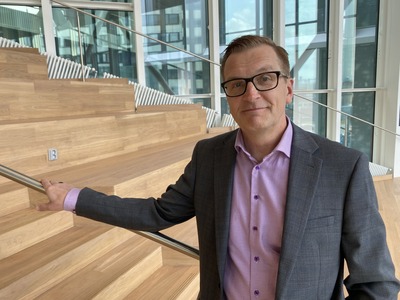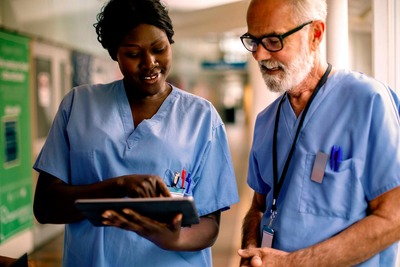Chief Physician and Professor of personalized cancer medicine Kimmo Porkka and his team at Helsinki University Hospital (HUS) Comprehensive Cancer Center have made significant progress in harnessing advanced technologies to guide diagnosis and treatment of acute leukemia. After two years of research collaboration with Tietoevry, Productivity Leap and research partners, the project, completed in 2022, has yielded successful outcomes.
UsingAI for cancer diagnostics
Kimmo Porkka emphasizes the importance of automating hospital data due to the vast amount of information involved in care of each oncology patient. Automation ensures high-quality care while en route to personalized therapies, which remains the ultimate goal of managing cancer patients. Recognizing the complexity of analysing multidisciplinary hospital data, the project brought together HUS, Tietoevry, Productivity Leap, and other partners to leverage the latest technologies such as data harmonization, AI and machine learning. By piloting advanced profiling of diseased cells, HUS datalake resources, and advanced data integration, the project has accelerated diagnostics and will aid clinicians in the complex management of these patients.
Data harmonisation and Tumor Board solution in focus
As different healthcare units employ varying IT solutions, a remarkable effort was made to harmonize patient data into an international standard data model known as OMOP (Observational Medical Outcomes Partnership). This work facilitates scaling up and commercializing project outcomes in university hospitals in Finland and beyond. Notably, the project’s Hospital Tumor Board solution, a data-driven decision support system, has been developed to identify and integrate data, and provide clinical decision support necessary for patient tumor board meetings. This solution will accelerate treatment decisions by automating molecular diagnostics and selection of patients for standard treatment or clinical drug trials.
Kimmo Porkka says: “Detailed tumor profiling and computerized clinical decision support systems will be key in advancing cancer care and matching right patients with the right treatments.”
Collaboration and future plans
The Acute leukemia project has fostered collaboration among several partners with diverse areas of expertise. Tietoevry developed the Tumor Board solution based on iterative feedback from HUS clinicians and played a vital role in creating the required data model. Productivity Leap played a significant role in harmonizing patient data, coding it to align with the standardized data model.
Niina Siipola, Head of AI and Data solutions from TietoevryCare says: “This project has been interesting and meaningful for our team. It is an honour that we can help in cancer care with our technical competences and understanding of health data. This was our first data-driven solution, where we utilized OMOP modelled data.” Kari Natunen from Productivity Leap adds: “We are extremely proud to have been involved in an important and meaningful project under the guidance of Kimmo Porkka. As a certified OMOP SME partner, we believe that similar projects and the use of data in the development of health technology will significantly increase in the future. Consequently, we can contribute to accelerating the utilization of important innovations for various stakeholders.”
Kimmo Porkka looks forward to measuring the actual time savings in treatment protocol decisions and trial matching for cancer patients during the piloting phase with end-users, the clinicians. If the outcomes of the project can for their part increase the percentage of cancer patients participating in drug trials from the current 10% to 20%, substantial savings could be achieved, as trial drugs costing hundreds of thousands of euros per patient are provided free of charge by pharmaceutical companies. Additionally, participating in drug trials grants cancer patients access to cutting-edge treatments years before their commercial availability. HUS’s involvement in trials also provides crucial insights into the latest drugs and an opportunity to contribute to the development of ground-breaking treatment protocols.
Looking ahead, the Tumor Board solution developed in this CleverHealth Network project holds the potential for scalability to other diseases, such as breast cancer and prostate cancer. Collaboration with other hospitals such as Turku and Tampere University hospitals are already in the planning stages, with prospects to expand beyond Finland. Another noteworthy outcome of the project is Hematoscope Inc, a digital platform spinoff company led by Dr.Oscar Brück exploring the use of machine vision to automate the analysis of microscope images from pathology specimens. This technology aims to free up pathologist’ time for more complex analytics.
In conclusion, the collaborative efforts of the Acute Leukemia project have showcased promising results in optimizing oncology diagnostics and treatment guidance. By harnessing technology and embracing innovation, the project has paved the way for improved patient care, streamlined decision-making, and potential advancements in the treatment of various cancers.

In the picture: Kimmo Porkka

